Siderite
 | FeCO3Siderite is a carbonate mineral of iron. It has the composition FeCO3. The origin of this sample is Lukmanierschlucht, Grissons, Medel, Switzerland. It is on display in the Smithsonian Museum of Natural History. The sample measures about 12x12 cm. 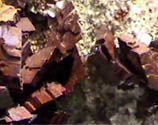 |
Siderite is a member of the calcite group of carbonates along with rhodochrosite and Smithsonite. Siderite is a minor ore of iron. Its name derives from sideros, the Greek word for iron.
Looking profoundly different from the sample above, this siderite is from Baia Sprie, Crisana-Maramures, Romania and measures about 12x14 cm. It has the appearance of a cluster of spherical shapes, each sphere containing thin petal-like structures. 
|  |
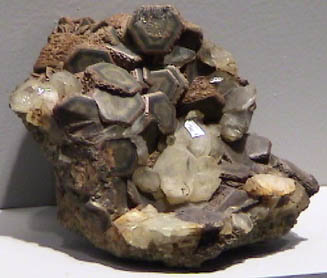 |
Another form of siderite shows thicker plate structures. This sample is from Wheal Maudlin, Cornwall, England and measures about 7x10 cm. |
 The small sample above is yet another form of siderite, a solid cubical structure about 4x4 cm from Mont Saint-Hilaire, Quebec, Canada. The sample at right is siderite with quartz from Morro Vellio mine, Nova Lima, Minas Gerais, Brazil. That sample is about 8x11 cm. | 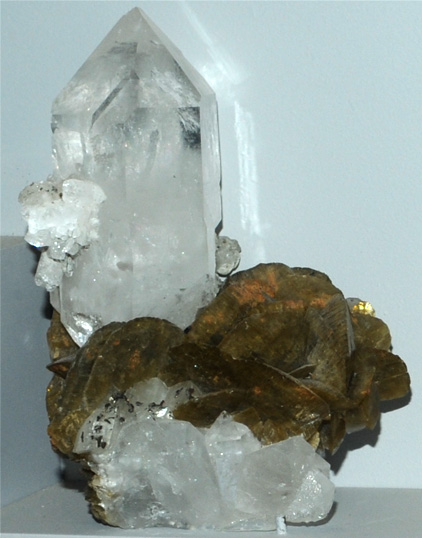 |
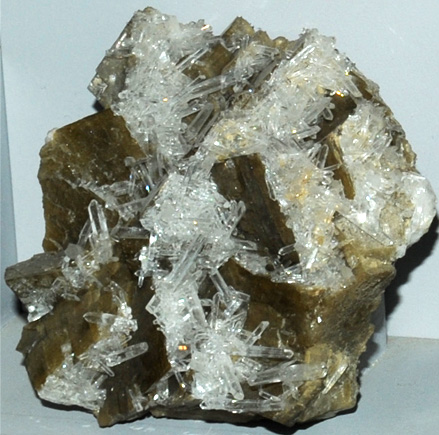 |
Another example of siderite with quartz comes from Allevard, Isere, France, measuring about 8x8 cm. |
|
A sample from Llallagua, Potosi, Bolivia is siderite with pyrite, measuring about 12x15 cm. | 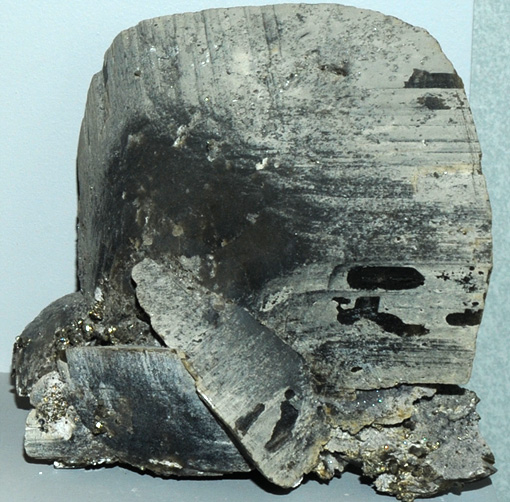 |
 |
Galena with siderite. Sample measures about 12x12 cm and is from Neudorf, Germany. |
|
Ferberite with arsenopyrite and siderite. The black, shiny crystals are ferberite, an ore of tungsten. The silvery crystals are arsenopyrite, an ore of arsenic. The siderite crystals form the frosting. The sample size is about 14x14 cm and it is from Panasqueira, Portugal. | 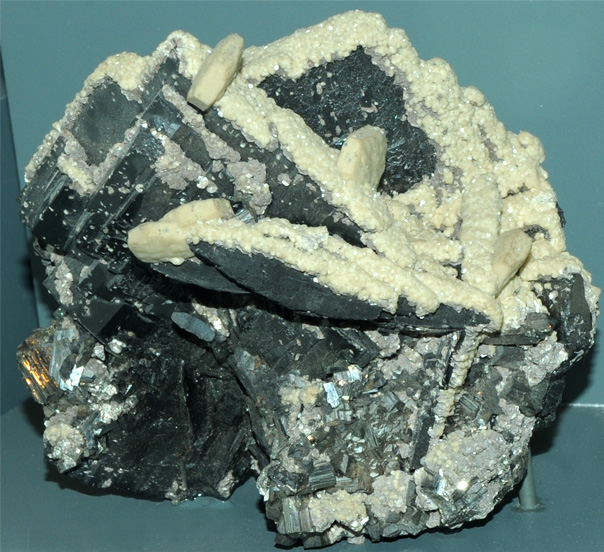 |
Mindat: Siderite
| Minerals |
| HyperPhysics*****Geophysics | R Nave |